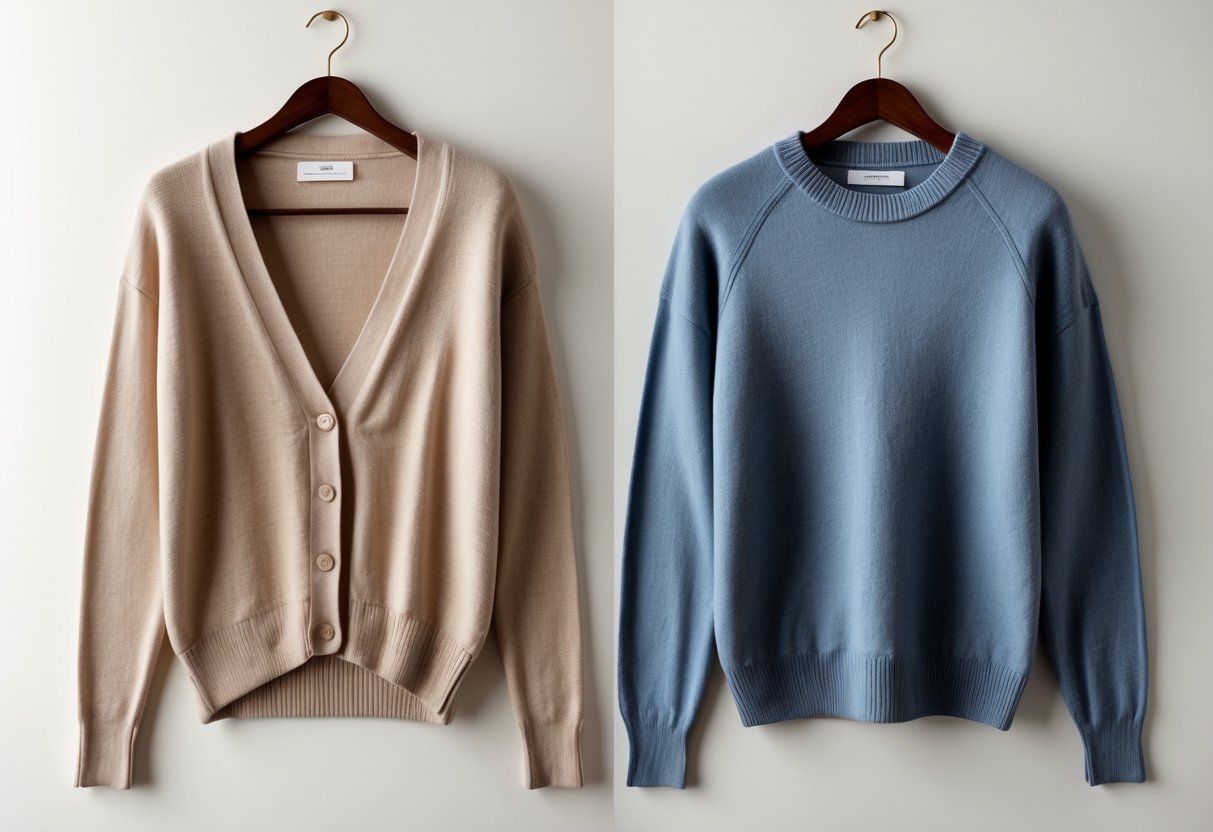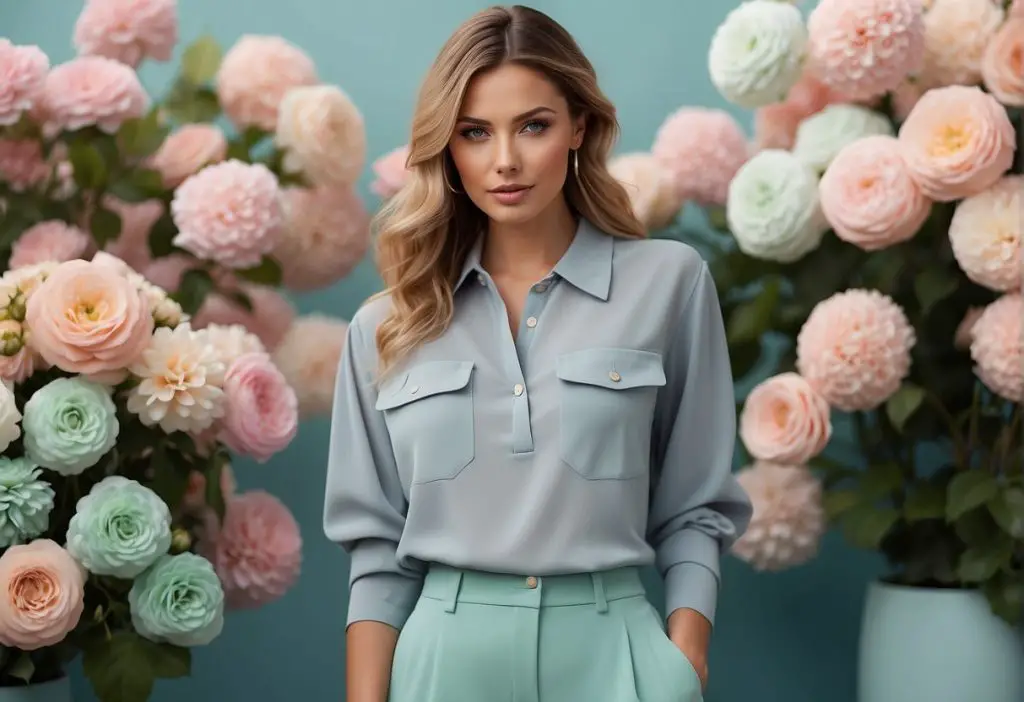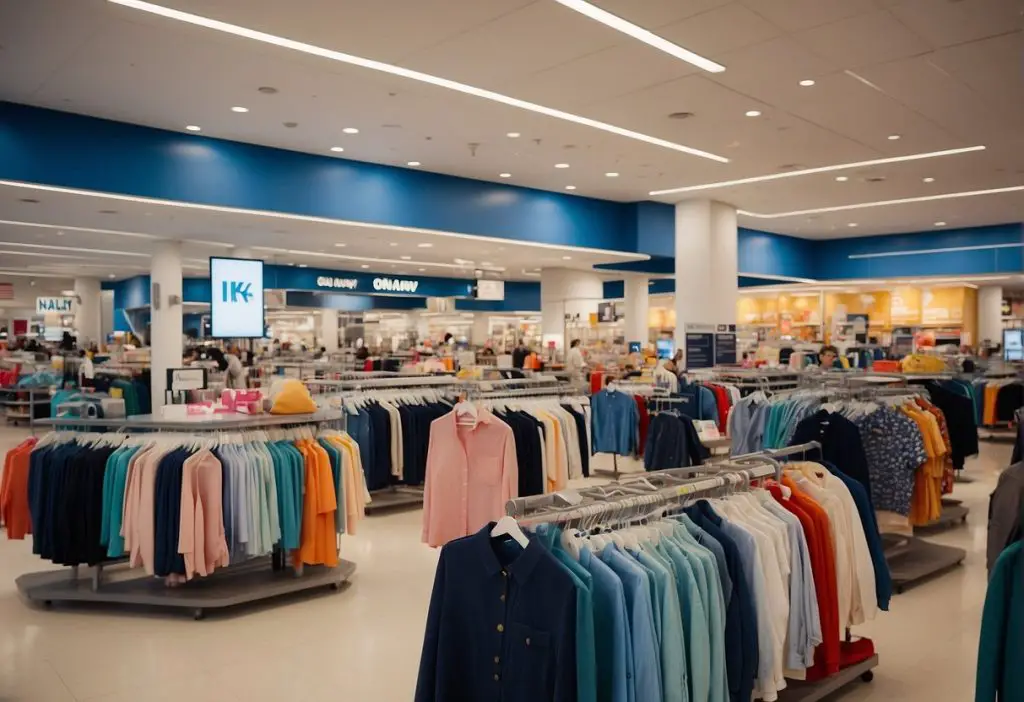A cardigan and a sweater may look similar, but they serve different purposes in a wardrobe. A cardigan has its opening at the front, while a sweater is a pullover with no opening. This simple difference changes how each piece feels, looks, and functions in daily wear.
What’s the difference between a cardigan and a sweater? Let’s find out!
Choosing between a cardigan and a sweater depends on comfort, style, and convenience. A cardigan offers easy layering and quick temperature control. A sweater provides warmth and a clean, classic look that works in both casual and formal settings.
Understanding these differences helps anyone build a versatile wardrobe that fits their lifestyle and needs.
Key Takeaways
- A cardigan opens in the front, while a sweater does not.
- Each style offers unique benefits for comfort and layering.
- Knowing when to wear each helps create a balanced wardrobe.
Key Differences Between Cardigans and Sweaters

Cardigans and sweaters share similar materials and warmth, but their structure, closures, and layering use set them apart. Each offers unique benefits depending on how a person wants to wear and style the knitted garment.
Design and Structure
A sweater is a knitted garment that usually covers the torso and arms without any front opening. A sweater is generally a pullover, meaning it must be worn over the head. This design creates a smooth, continuous front that provides even warmth.
A cardigan, by contrast, features an open-front design. It can hang loosely or close with fasteners like buttons or zippers. The open front makes it easier to adjust for comfort and temperature.
Sweaters often have thicker knits or ribbed cuffs, while cardigans may use lighter yarns for flexibility. A cardigan’s construction allows for more ventilation, making it suitable for both indoor and transitional weather.
In short, sweaters feel more enclosed and uniform, while cardigans offer adjustability and visual layering.
Fastening Options
The main difference in closures lies in how the garment opens and closes. A pullover sweater has no fasteners. It relies on elasticity in the neckline or fabric stretch to fit over the head. This design keeps warmth inside but limits quick removal.
A cardigan includes buttons, zippers, or occasionally toggles. These fasteners allow the wearer to control how much of the front remains open. For example, a button-up cardigan can be worn fully closed for warmth or partly open for style.
Some modern cardigans use zipper closures for a sportier look, while traditional styles keep button fronts for a classic appearance. The fastening choice affects not only appearance but also convenience, especially when layering or adjusting for temperature changes.
Layering Capabilities
Cardigans excel at layering because of their open-front design. They can go over shirts, blouses, or even lightweight sweaters without restricting movement. The wearer can easily remove or adjust the cardigan without disturbing the rest of the outfit.
Sweaters, especially pullover sweaters, provide warmth but less flexibility. Once on, they cover the entire upper body, making them harder to remove without changing the outfit underneath.
Cardigans work well for office wear or changing weather, while sweaters suit
Popular Styles and Uses
Cardigans and sweaters come in many forms that fit different settings, weather, and outfit choices. Each style has its own look, level of warmth, and purpose in both casual and formal wardrobes.
Types of Cardigans
Cardigans vary by length, fit, and fabric. Cropped cardigans stop at the waist and pair well with high-waisted jeans or skirts. They create a neat, balanced look without adding bulk. Oversized cardigans use thicker knitwear and hang loosely, offering comfort and warmth for relaxed days.
A formal cardigan often uses fine wool or cotton and features clean lines, buttons, and sometimes a shawl collar. It works well over a shirt or blouse for an office outfit or business-casual setting.
Some cardigans have open fronts with no buttons, which makes them easy to layer. Others include belts or ties for a more fitted shape. The choice often depends on whether the wearer wants structure or softness in their outfit.
| Style | Fit | Common Use |
|---|---|---|
| Cropped | Short, fitted | Trendy or casual wear |
| Oversized | Loose, long | Cozy, everyday wear |
| Formal | Tailored | Office or semi-formal events |
Types of Sweaters
Sweaters come in many designs that suit different temperatures and occasions. Crewneck sweaters have a round neckline and fit well under jackets or coats. They are a staple of both casual and work wardrobes.
Turtleneck sweaters cover the neck for extra warmth, making them ideal for winter wear. They pair easily with coats or blazers for a clean, layered look. Chunky knit sweaters use thick yarn and textured patterns to provide insulation and a relaxed style.
Pullover sweaters slip on without buttons or zippers, offering simplicity and comfort. Some designs mix materials like wool, cotton, or acrylic to balance warmth and breathability. The range of options allows wearers to choose based on season, comfort, and personal taste.
Best Occasions and Outfit Pairings
Cardigans and sweaters adapt well to both casual and formal settings. A formal cardigan can replace a blazer in a business-casual office outfit, while an oversized cardigan pairs well with jeans for a relaxed weekend look.
Crewneck sweaters and pullover sweaters work well for layering in cooler months. Pairing a turtleneck sweater with tailored pants or a skirt creates a simple but polished outfit. For winter wear, a chunky knit sweater adds warmth without needing many layers.
When styling, balance texture and fit. A fitted cardigan complements wide-leg trousers, while a loose sweater works best with slim jeans or leggings. These combinations keep outfits practical and visually balanced for everyday use.
Frequently Asked Questions
Cardigans and sweaters differ in structure, materials, and how they fit the body. Each offers distinct styling and comfort options for different climates and preferences.
What are the defining characteristics of a cardigan?
A cardigan opens in the front and usually has buttons or a zipper. It allows easy layering over shirts or blouses. Sweaters, in contrast, are closed garments pulled over the head.
Can you explain the differences in materials typically used for sweaters versus cardigans?
Both cardigans and sweaters often use wool, cotton, or synthetic blends. Cardigans may use lighter yarns for flexibility and layering. Sweaters often use thicker knits for warmth and structure.
How do the fit and sizing compare between cardigans and sweaters?
Cardigans tend to have a looser fit to allow other clothing underneath. Sweaters are usually more fitted since they are worn alone. Both come in various cuts, but cardigans often provide more adjustment through their front opening.



